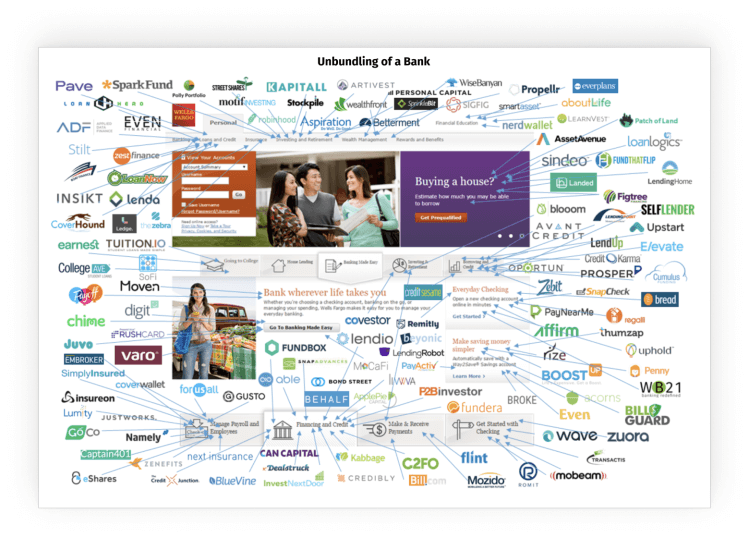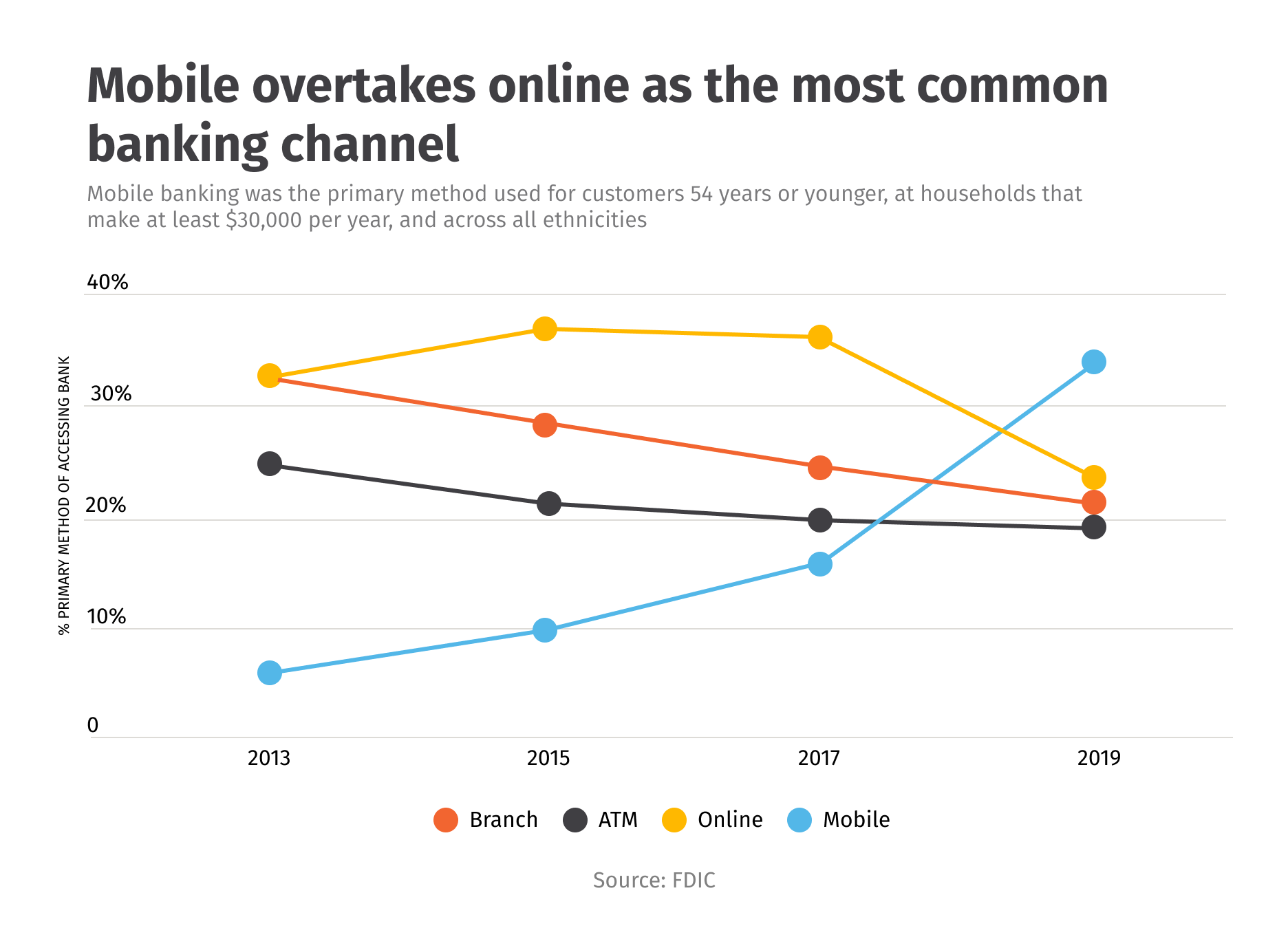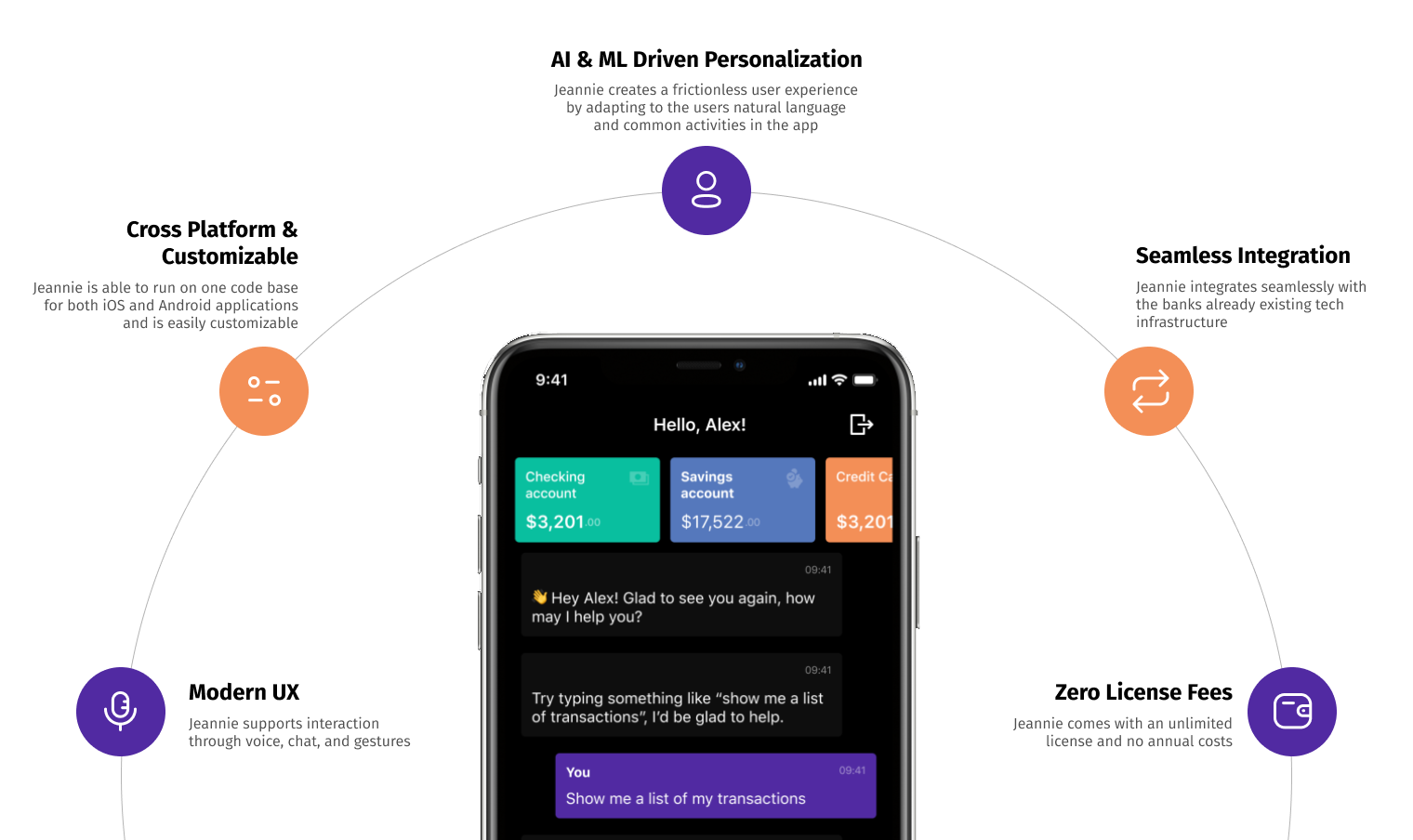
Redefining the customer experience in consumer banking
The banking industry is in the middle of a significant transformation. Fintech startups and other non-traditional companies are gaining market share at the cost of traditional banks, and customer attrition is at an all time high.

According to Boston Consulting Group, corporate banks lose between 10–15% of gross revenues due to attrition annually — there was a 15% attrition rate amongst retail financial institutions per year (Source: Boston Consulting Group).
So why is the attrition rate so high with traditional banks? The main reason is that customers are dissatisfied with their experience at their bank. Fintech companies are stepping into this gap left by retail banks with a heavy focus on a flawless customer experience and an emphasis on an efficient and personalized user experience. According to CNBC, mobile banking traffic has increased by a whopping 85% since the beginning of April 2020, with many experts predicting that this growth is likely to stick. Mobile banking offers customers many advantages, the most important being ease of access. Instead of having to wait in line at a physical branch, customers are able to access and manage their money from virtually anywhere.

However, many users find mobile banking interfaces complex, cluttered, and frustrating to use, a massive contributing factor to the high attrition rate. Users have complained about difficulties in setting up and using basic features such as fraud alerts and payment reminders, lack of customer service availability, and cumbersome identity verification processes. In order to retain their existing customers and to capture new ones, banks have already realized that they need to prioritize improving their digital experience to meet and exceed the expectations of their users.

Banking apps themselves have not changed significantly since their creation - users want a new experience, not one that has already been played out. Banks need to find a way to deliver a fresh, new and personalized experience to customers.

Research and consumer studies have shown that mobile banking users are looking for:
- Frictionless and seamless interactions with their banking apps. Users are looking to complete their task with the least amount of taps possible.
- A personalized user experience. These days almost every mobile application— whether it be social media, video streaming, or a game — is personalized to the user. Users want to feel special, not use a cookie-cutter one size fits all product, which is exactly the experience that they get from the majority of the mobile banking applications today.
- A clean and simple UI/UX design. Simpler experiences are more valuable to consumers, as it saves them time and makes them feel more in control.
- A streamlined customer service experience. Customer service is a massive friction point in the retail banking industry - streamlining common processes like identity verification in the mobile app would greatly improve the speed at which customers are able to receive help.
There is an opportunity for banks to create a differentiated customer experience by leveraging a technological innovation that is gaining fast adoption in the industry - digital assistants. Bank of America is at the forefront of this trend with their assistant “Erica”. Erica is proof that digital banking assistants are what customers want - it has accumulated over 15 million users since its launch in 2018. Users have flocked to Erica because it’s a fresh new way to interact with their mobile banking app. Digital banking assistants are an absolute game-changer for traditional banks; they provide greater convenience, speed and accessibility for customers while also reducing the cost of operations.
So why doesn’t every bank have a digital banking assistant? That’s because building these products in-house is both time consuming and expensive - for reference, Bank Of America spent 2 years and $30 million dollars to build “Erica”. A majority of banks simply do not have the time or resources to create something similar. Additionally, many banks do not have personnel with the necessary skill set required to undertake such an initiative.
Grid Dynamics has designed and built mobile apps for many of the Tier-1 retailers in the US and has used this experience to launch a starter kit for creating a modern Digital Banking Assistant. This starter kit provides the framework, architecture, design and prototype needed to create a cutting edge, customized virtual assistant for banks. This allows for a greatly improved digital experience for their mobile banking users through streamlining common procedures and increasing accessibility and ease of use.
Key Features of Digital Banking Assistant are:

- Modern User Experience With Voice, Chat, Tap and Gestures
This Digital Banking Assistant supports customer interaction through voice, chat, or gestures such as swiping or tapping, making it extremely easy for the customer to navigate through and interact with the app. Additionally, customers are able to interact with it using natural language due to the voice and chat options — this makes performing tasks such as depositing and withdrawing money much quicker and easier than tapping through multiple menus. - Highly Customizable & Cross-Platform
Grid Dynamics' Digital Banking Assistant can be customized to create an enhanced self-learning system that would further increase simplicity and personalization. This will allow the banking digital assistant to become more interactive as time goes on — it will eventually become a financial advisor that provides advice for customers on the best way to manage, invest, and save their money.
The use of Flutter in the tech stack allows it to run on one code base for both iOS and Android applications, decreasing the overall operations cost. The digital banking assistant can also be customized to add and extend functionality for certain account types, as the modular design allows for its technology components to be easily replaced with equivalent ones.
- AI & ML Driven Personalization
The powerful AI allows the Virtual Banking Assistant to adapt to the user’s natural language. For example, “cash”, “balance”, and “amount” can all be used interchangeably. It can also be trained to learn a user's lingo over time. This makes interactions with the assistant frictionless and much more user friendly. - Seamless Integration
The assistant integrates seamlessly with the bank’s existing tech ecosystem through already exposed API’s, greatly reducing implementation time. This will enable banks to easily create a digital assistant using the provided framework as well as have it up and running very quickly. - Zero License Fees
Grid Dynamics provides this starter kit with unlimited license without any cost. Grid Dynamics will only charge for the professional services to build the digital assistant using the starter kit. Moreover, banks will have access to the code and the technology used to build it, making future enhancements and extensions easy.
Banking is becoming more digital as time goes on and consumers expect the same high level of functionality and convenience from their banking app as they do from any other app that they use on a daily basis. Banks need to deliver an improved digital experience to their customers and digital banking assistants are a necessary step in the journey towards customer satisfaction. As time goes on digital banking assistants will be seen as a necessity rather than a luxury.

